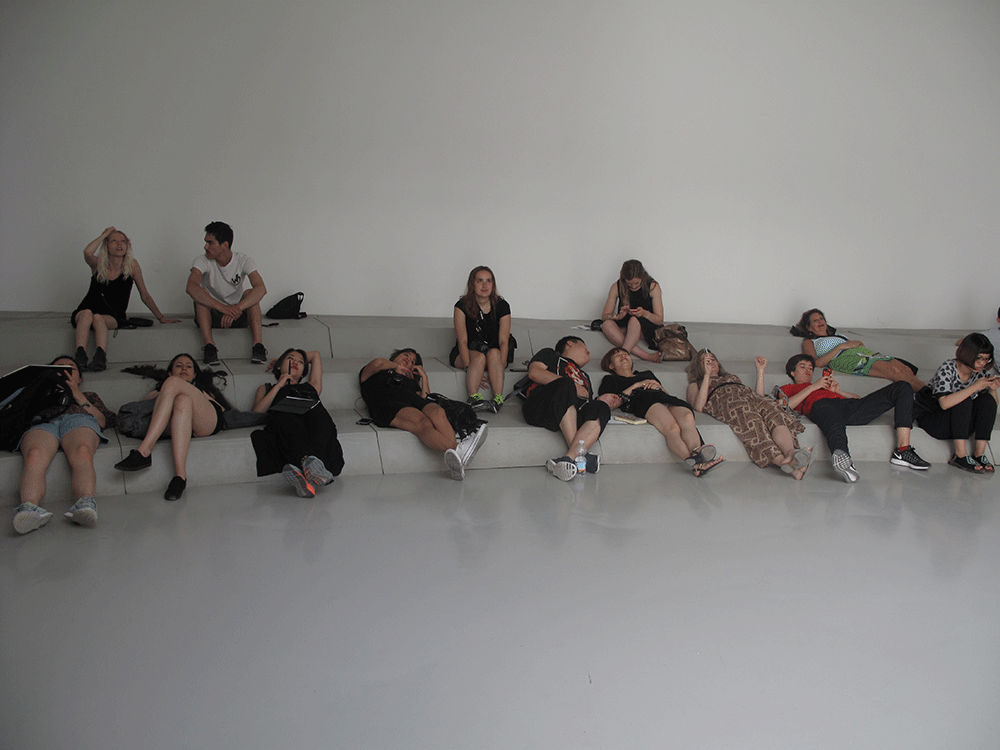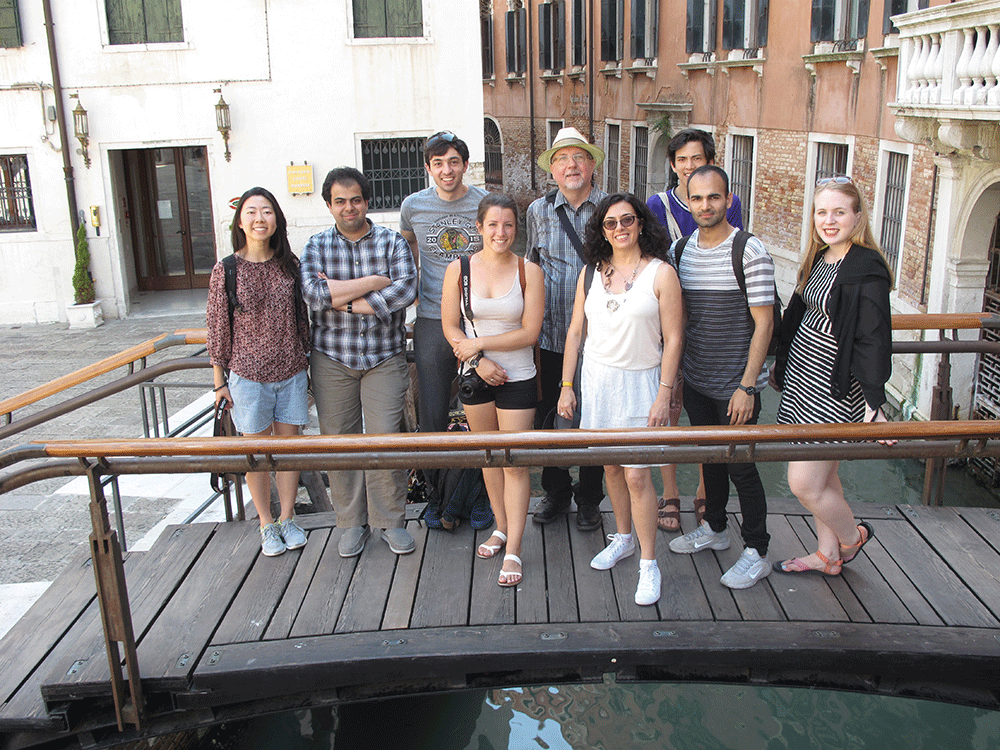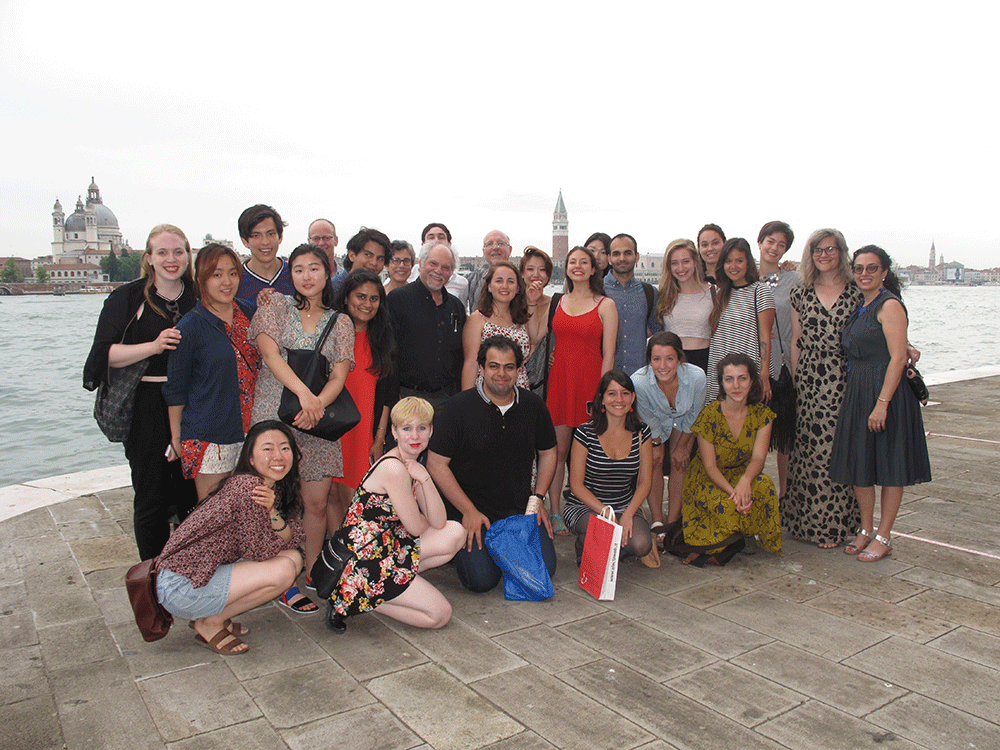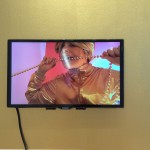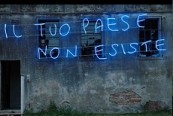Once again the fifty-sixth Venice Biennale, which runs from May to October this year, offered an exhilarating art world scavenger hunt across the noble canal city of Venice, Italy. From the major venues at the Giardini (a sprawling park dotted with national exhibition pavilions built from the nineteenth century onward), and the Central Pavilion and Arsenale (Venice’s former ship building yards), where Biennale curator Okwui Enwezor installed a collection of work, to the churches, palazzo, storefronts, and other nooks and crannies, Venice was bedecked with art from around the world.
The Biennale delivered a barometer of what’s happening in contemporary art, and by extension for this particular exhibition, what’s happening beyond the narrow parameters of that elite world. This year’s Venice Biennale cast a light on the complex texture of the global condition — the tragic horrors and the rapturous beauty humans have wrought past and present.
I met up with the School of the Art Institute of Chicago’s (SAIC) study trip to Italy headed by architect Anders Nereim, designer Helen–Maria Nugent, and art historian and critic James Yood (a terrific faculty representing the school’s art/design nexus) and their 30 smart “studenti,” who had just come from Milan and Rome studying the art and design of the past in order to engage with the art and design of today.
What struck me while in dialogue with the students in Venice was the breadth of SAIC’s international student body against the backdrop of this major international exhibition where the curatorial thesis of the entire show was All the World’s Futures. Here we were — deeply international (from Ecuador, Korea, Iran, Scotland, China, Syria, Canada, Argentina, Mexico, and the U.S.) — unpacking universal iconographies, global politics, national styles, and local traditions, together as a united nations of art student connoisseurs. It was wonderful. SAIC’s international student body was foregrounded as a great asset once again.
One notable failing, however, was the absence of African or African-American students on the trip, particularly in light of the many powerful examples of contemporary African art on offer in Okwui Enwezor’s curatorial project. This Biennale epiphany made it clear that if we are to build on our strength as a truly global art school, it is time to recruit in Africa, with its deep traditions of art making. Equally critical, we must continue the push to find and fund more domestic artists of color and provide them too with the opportunity to mine a global experience for their art and design education.
Okwui Enwezor’s show, also titled All the World’s Futures, carried the leitmotif of politics across a selection of objects and images. The central pavilion set up the thesis with an array of works addressing the ills of our time, from environmental calamity to violent racism. Karl Marx loomed large as Das Kapital was read aloud several times a day suggesting that capitalism remains the culprit in our world of excess and inequity.
The second half of Enwezor’s exhibition at the Arsenale pursued the theme further, but here the works displayed more affect, more expressivity, and more pathos. There were video and photographic images of the richness of cultures around the globe and beautifully crafted objects and paintings from the able hands of artists from Africa, Asia, Australia, and the rest of the world — many unknown to me.
Representing SAIC alumni were Rirkrit Tiravanija and Tania Bruguera, and Chicago was certainly in the house with major installations by Theaster Gates and Kerry James Marshall. Works on paper dominated both venues as if to underscore the social and economic accessibility of this art form in defiance of an escalated art market (although Professor Yood was quick to point out that the artist’s labels held the name, title, country of origin, and current residence, with “lives in New York,” “lives in London,” and “lives in Berlin” dominating. All the world’s futures[u1] , it seems, ultimately leads back to a few hegemonic art centers).
Central to our progress in producing visual culture at SAIC is the role of empathy. We depict so that others might enter into our vision, a new vision, and in so doing expand their own thinking. An international student body, like the global art world, is essential to poetically building a peaceful understanding between those of different cultures, genders, races, nations, and beliefs.
In Venice we saw the beauty of Haiti, we heard the music of the Republic of the Congo, we beheld objects of wonder from China and distressed detritus from the Israeli/Palestinian conflict, and we witnessed the faces of Iran in exquisitely rendered paintings. Our international student body helped open up the work by sharing the stories of their own cultures and nations. And this kind of access to the Biennale was profound. SAIC will continue to educate “all the world’s futures” through the many voices we have on campus and through our willingness to listen to each and every one. I was listening in Venice, and it was extraordinary.

